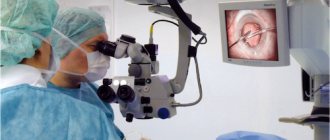Will this method replace the classic colonoscopy?
Colonoscopy is an important diagnostic procedure related to endoscopic examinations. The essence of the examination is to insert a special colonoscope equipped with a camera through the anus into the large intestine. As it moves through the intestinal loops, which are straightened by air, an image of their inner mucous membrane is displayed on the monitor. This procedure may cause discomfort and in this case it can be carried out in a state of medicated sleep. In addition, there are a number of absolute and relative contraindications to colonoscopy. Therefore, relatively recently an alternative method of examining the intestines has appeared - virtual colonoscopy.
Main contraindications
Typically, colonoscopy using a computed tomograph has no special contraindications; it can be performed with a slight increase in temperature, during early pregnancy (according to the recommendations of specialists).
Contraindications are:
- Strangulation of an inguinal or umbilical hernia;
- Early postoperative period (especially during abdominal operations);
- Colic or acute abdominal condition;
- Signs of intestinal obstruction.
Pregnancy and lactation are a relative contraindication, so the procedure can only be performed after consultation with specialists.
Additional information about the features and performance of virtual colonoscopy in this video:
Virtual colonoscopy is a new diagnostic method in modern proctology. Despite the many advantages and non-invasiveness of the method, computer colonoscopy has a number of disadvantages that traditional colonoscopy compensates for. Proper preparation and adherence to medical recommendations allows you to fully assess the condition of the intestines in all its parts.
Are there any differences in the signs and symptoms of intestinal polyps in women and men? Find out in our article here.
Virtual colonoscopy (also known as computer colonography, also known as CT colonography or CT colonoscopy, computed tomography - CT colonography) is a modern, painless radiation method for examining the large intestine. Unlike conventional computed tomography, the resulting X-ray image is processed by a special program; at the end, the doctor “sees” pictures from the “inner surface of the intestine as if in reality.” Unlike a conventional endoscopic procedure, which patients are so afraid of and avoid, during virtual colonoscopy, an instrument, a colonoscope, is not inserted into the rectum.
What a virtual colonoscopy can show
Virtual colonoscopy is the same as computed tomography, but with a certain method of performing it, when the computer recreates an image of the colon in the form of a three-dimensional picture, similar to the image obtained with a colonoscope inserted inside. This procedure is non-invasive and is well tolerated by patients, who are more willing to undergo it than a classic colonoscopy.
Virtual colonoscopy allows a specialist to see on a computer monitor intestinal neoplasms with a diameter of more than 1 mm, erosions, inflammation and other changes, but with this method it is impossible to assess the color of the mucous membrane or take biopsy material. Therefore, virtual colonoscopy is indicated for patients with an already established diagnosis to determine the dynamics or rehabilitation control after surgery.
Main indications for use
The main indications for virtual colonoscopy include:
- Irregular bowel movements and long-term chronic constipation.
- Discharge of bloody contents from the rectum.
- Previously identified benign and malignant neoplasms, as well as polyps in the intestinal area.
- Chronic pain in the umbilical, right or left iliac region.
- Spontaneous causeless decrease in hemoglobin levels in the blood.
Virtual colonoscopy is especially relevant for patients with suspected single or multiple intestinal polyps. Thanks to this diagnostic option, it is possible not only to identify pathological neoplasms, but also to determine their structure.
Important! In addition to the conditions mentioned, regular virtual colonoscopy is indicated for people who have close relatives who have previously been diagnosed with cancer of the upper intestine or rectum.
Advantages and disadvantages of virtual colonoscopy
Virtual colonoscopy allows you to examine the condition of the colon over a length of one and a half meters with a minimum of radiation exposure to the body. This method has the following advantages:
- accurate assessment of the shape and location of all parts of the colon, the thickness of its walls and the condition of nearby tissues and lymph nodes;
- the ability to view the inner lining of the digestive tube;
- the process does not require serious manipulation in the internal structure of the body;
- examination of intestinal areas difficult to reach for standard colonoscopy is available;
- painlessness and excellent tolerability by patients of all age groups.
Like any other diagnostic method, virtual colonoscopy also has its disadvantages, namely:
- it is not possible to detect intestinal tumors that are less than 5 mm;
- Diagnosis of squamous cell intestinal cancer is difficult;
- impossibility of taking biopsy material or excision of benign neoplasms discovered during the study;
- not suitable for examining patients in whom the development of an oncological process is suspected.
The presence of these disadvantages does not allow virtual colonoscopy to completely replace the standard invasive endoscopic procedure!
Which is better - virtual or regular colonoscopy?
Each of the methods prescribed for intestinal pathology has its own indications and contraindications. VCS is better tolerated by patients. This is due to the non-invasiveness of the procedure, the absence of pain and the risk of dangerous complications. But during the virtual CS:
- neoplasms smaller than 5 mm, foci of squamous cell carcinoma or precancerous changes in the mucosa cannot be detected;
- there are difficulties with the differential diagnosis of neoplasms, especially in the early stages of development;
- it is impossible to take material for a biopsy for the purpose of histological examination or to perform a polypectomy.
Therefore, each of these examination methods has its own specific indications for use:
- CS is the most accurate method for diagnosing any pathology of all parts of the colon, and is also successfully used in treatment. Can be used as a surgical method: for example, polypectomy or removal of internal hemorrhoids, coagulation of blood vessels during bleeding. It is also used for local administration of medications for bleeding, ulcers, and erosions.
- VCS is more effective for confirming the diagnosis and its details (for colorectal cancer, you can assess the condition of neighboring organs, for ulcerative colitis, you can identify the prevalence of pathology, and for hemorrhoids, you can study the progression of internal nodes).
The proctologist will decide which method is best to choose for each specific patient after the initial examination. He will give you a referral for an examination and explain how to properly prepare for it. You just need to make an appointment in a timely manner, do not delay the consultation, but do it when the first signs of ill health appear. This is the only way to identify the disease in its early stages.
Indications and contraindications for virtual colonoscopy
This type of diagnostic examination has its own absolute indications:
- in case of intestinal bleeding to determine its location;
- to determine bulk intestinal tumors;
- to confirm the presence of an inflammatory process in the colon.
Virtual colonoscopy has become widespread as a screening (first, screening) study for patients over 50 years of age and those at risk for the possible development of colon cancer. This risk group includes the following categories of patients:
- regularly detecting blood in their own stool;
- close relatives suffering from colon polyps or malignant tumors in any part of the intestine.
It is recommended that such patients undergo a virtual colonoscopy once every 5 years.
Despite its apparent simplicity, this method of virtual research also has its contraindications, of which, in principle, there are not so many:
- pregnancy and lactation;
- obesity;
- history of perforation of any part of the large intestine.
How is it different from classical research?
Unlike the classic version of examining the intestines using colonoscopic equipment, virtual colonoscopy does not provide the amount of information that would allow a full assessment of the condition of this part of the digestive system. As a rule, virtual colonoscopy is prescribed for preventive purposes for dynamic assessment of the condition of patients with certain intestinal diseases, as well as in the period after organ surgery.

Compared to the classic version of colonoscopy, the virtual technique has the following differences:
- Possibility of assessing the condition of hard-to-reach parts of the intestine.
- Detailed visualization of each layer of the intestinal wall.
- There is no risk of complications and is well tolerated by patients of different age groups.
- The ability to determine the anatomical configuration of any part of the intestine.
- No discomfort or pain when performing diagnostics.
- The ratio of a low level of radiation exposure to the body and a high level of information content.
- There are no contraindications for use during pregnancy.
Preparing for a virtual colonoscopy
Preparation for a virtual colonoscopy is identical to preparation for an examination of the large intestine according to the standard procedure.
- 3 days before the examination, you will need to adjust your diet by removing all foods that contain toxins, as well as those that provoke increased gas formation and an increase in the volume of feces.
- The day before the procedure, you can only eat liquid food, and the evening before and in the morning you should cleanse the intestines with enemas or using laxatives, for example, Fortrans.
- It is not recommended to take conventional laxatives, and 3 days before a virtual colonoscopy you should completely avoid drinking alcohol.
Virtual colonoscopy technique
In order to fully understand the concept of “virtual colonoscopy”, it is necessary to clarify what it is.
The method is based on illuminating the body with special rays, which are captured by a different number of sensors, and then the signal from them enters the computer’s memory. It makes it possible to analyze the structure of organs layer by layer.
In order to understand what a virtual colonoscopy is and how it is performed, it is also necessary to mention a very important detail. The principle of the procedure is based on the fact that the tomograph moves in a circular motion around the patient’s body, scanning tissues, saving and transmitting their images in 3D projection to the computer screen.
The progress of the study is presented as follows:
- The patient lies with his back up.
- An elastic probe with an air pump attached to it is inserted into his anus.
- A table with a lying person goes inside the tomograph.
- The device is turned on and the patient's body is scanned.
- If necessary, the specialist asks the patient to change position.
- Then he studies the picture that appears on the monitor screen and takes pictures.
A virtual colonoscopy is performed in about a quarter of an hour, giving the most complete picture of the pathology.
According to patient reviews, the procedure does not bring any pain; some discomfort can only be felt when pumping up air masses to straighten the intestines.











